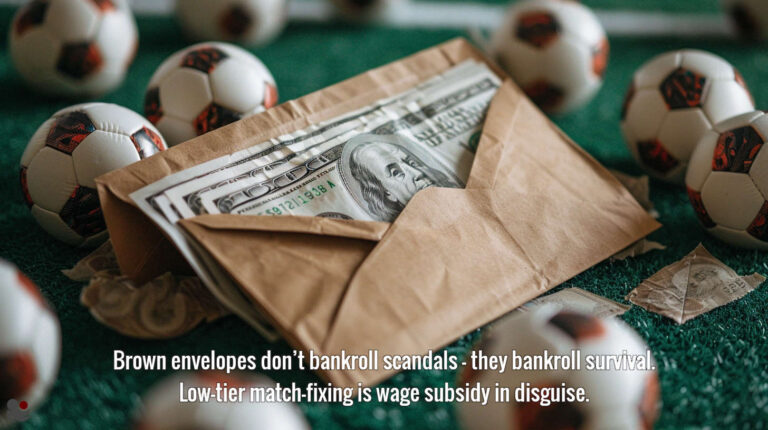
In many betting forums there are regular discussions and queries about value betting. However, it seems that there are a good number of bettors who believe in myths and indulge false concepts.
 Image: Jeff Banke (Shutterstock)
Image: Jeff Banke (Shutterstock)Here are some of the most popular misconceptions…
(1) Betting on low odds is not worth the effort because winnings are very little
This is absolute nonsense. Successful betting is not about the pay-out of a bet, but the main goal is to make a profit. Very often, especially in the small odds markets excellent value can be found.
In addition, low odds have the huge advantage that they stand for high probabilities and therefore losses are considerably fewer in number than with higher priced, lower probability events. Also, small odds experience shorter losing streaks and the patience of the gambler is never stretched too far.
However, what really matters is the price of the bet.
If, for example, the calculations for a match throw up an 85% chance that there will be under 3.5 goals (corresponding betting odds: 1.18), and the market is offering odds of 1.25 then this is a fantastically good value back bet opportunity.
(2) Betting on higher odds is more profitable
Again this is a very common misconception. Higher odds do not automatically hold more value and are therefore more profitable than lower odds.
Many punters believe that better returns can be achieved in the long run if playing at odds between 2.5 to 3.0. Of course, it is understandable that these bets are quite popular as the potential winnings are 1.5 to 2.0 times the stake.
However, what most gamblers do not consider (or perhaps simply do not know!) is that these betting odds represent chances of 33% to 40% of winning, meaning that on average six to seven out of 10 bets in this group will lose.
Since winning and losing bets are never evenly distributed it may well happen that, with a little luck, a few bets in a row may be won but, much more likely is that many, many consecutive bets will lose until the betting bank is depleted beyond recovery or is drained altogether.
(3) If odds are very low it’s a good idea to combine bets
Accumulator bets are the bedfellow of every bookmaker. Full stop! So far as the bookies are concerned the more people combining their betting choices, the better. It is an absolutely nailed on profit for the bookmaker, and only long-term misery for the punters.
We have already mentioned that bets at very low odds have a pretty high chance to win. There is no question about this. Nevertheless, even a bet with a 90% chance of winning still has a 10% probability of losing. Multiples of bets greatly increase the chances of losing. Only one bet needs to go wrong for a busted flush.
In addition, there is of course the overround of the bookmakers. When combining your bets, you usually have to pick one bookmaker limiting you to accepting their fixed prices. You can be sure that somewhere in the accumulator package you have bought will be bets priced well below their true value. No bookmaker offers best price on every event – if they did they would soon be out of business.
With accumulators you are invariably buying negative value and we have seen throughout this blog that the only way of making consistent profits through gambling is by having value on your side, constantly.
This sermon is therefore to encourage you to avoid multiple, accumulator or parlay bets. You can be sure that the bookmaker is god in this particular arena and the gambler always loses in the long run, guaranteed.








Terrible Article. Horrible Advice!!!
Your 5th point is insulting to profitable bettors saying that it’s not possible. It is without a doubt certainly possible to win 80% of your bets with odds of 1.5, even more easier if you’re winning 70% of your bets which is more achievable. If you have a tennis player who is available to back at 2.05 and you believe they have a 70% chance of winning the match, and you back this kind of outcome time and time again, you will make a shed load of money just like many people are. Nothing is impossible with the right information.
Hi soccer widow,
I have purchased all three of your spreadsheets for value calculation and during the last 3 months i am running a series of screening tests which include: identifying value, place the bets and results recording.
But i have not being able yet to answer one simple question, ‘ How much value is accepted?’ . I mean is it possible to quantify the acceptable levels of the mathematical edge on which we make our bets?
While everybody is looking for value,what makes me wonder is ‘what is the bookies approach to this?
My results show that when bookmakers offer high value bets (e.g math edge over 130% ) then these bets most likely do not make profit. That make sense to me since, a bookmaker will not give away high value odds because this will destroy its profitability in the long run.
Almost 7 out of 10 bets, where value calculation is more than 150%, result in a loss. This occurs frequently in high volume matches like Champions league games or local derbies in EPL.
Therefore my question to you and the readers is :Can we safely measure the “acceptable” levels of value in our picks?
True Odds & Value Detector: League Games with H2H History
Hi Socrates,
You are asking a very good question ‘How much value is accepted?’, and your observation matches other people’s research results.
Unfortunately, you’ll have to keep playing with the strategy of your choice until you work out what works for you, and what doesn’t. For example, we have been monitoring dutch-backing HT scores for while, and for this it has to be a positive value, but not more than 30%.
Bookmakers have of course more information about the games than a normal punter, and no doubt, they’ll also have knowledge of anomalies. Therefore, if the value calculations are showing a huge value, then it may be as well a fixed match, or anything else influencing the outcome far more than statistical distribution.
Very interesting Lakoni. I am somewhere between 2nd and 3rd stage searching for best way to find value in football. I am using statistics from past 2 seasons and putting them into poisson calculations but still lacking something.
Can you please share your approach? If you do not want to do it in public I can give you my e-mail. Thank you anyway!
The punter goes in his betting-career through few stages.
1. He finds out that % of correct picks is not the most important when judging any punter’s skills. He realizes that the odds are also important.
2. He considers Yield as the only one factor which decides of skills of punter, forgetting that primary aim is to make cash. In this level, a punter doesn’t take any other factor (as number of picks) into account. Yield is the holy grail and nothing is important at all.
3. The third stage is discovering that one guy can make bigger profit in a season despite having lower yield. Paradoxically, the punter now re-realises what he had already known when started his betting career. This is that the main aim is to make cash.
I am now on this third stage and thank you Soccerwidow and your excellent explanations and tutorials. I am now making profits by placing plenty of value bet selections 🙂